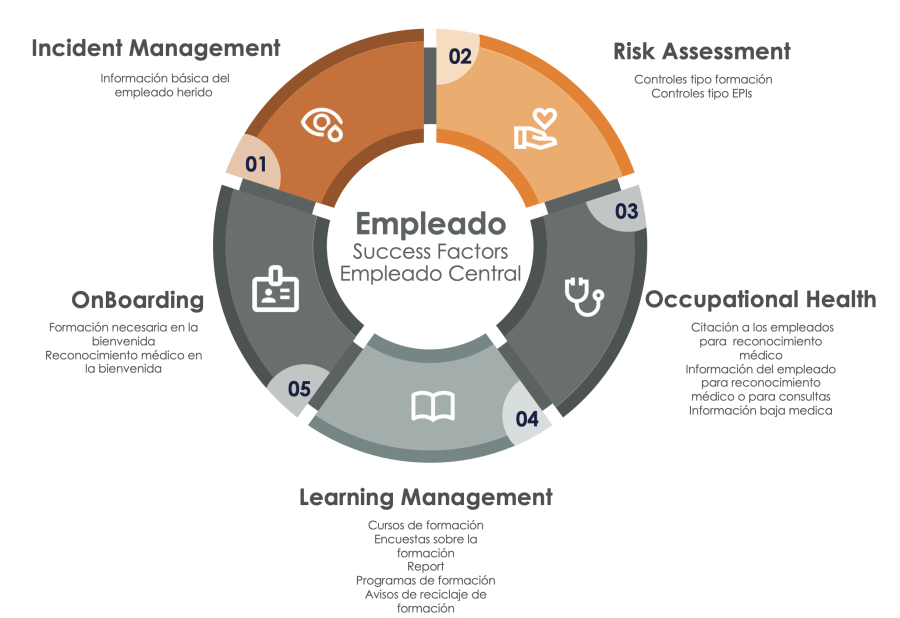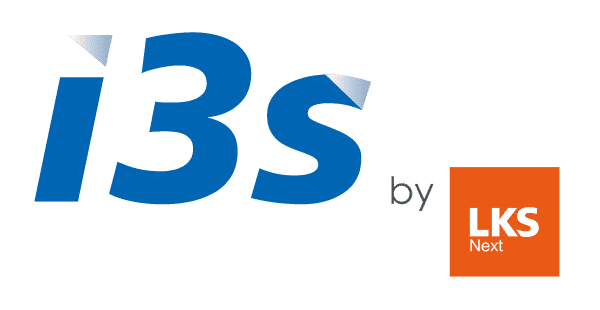Integration
SAP SuccessFactors
with EHSM
Create an environment to inform and train your staff in everything related to prevention and occupational hazards. Efficiently complies with current regulations in Spain and Europe.
The regulatory challenge and training in the area of occupational safety and health
The regulations in force in Spain and Europe establish certain communication obligations in this area, the non-compliance with which entails serious penalties.
Employee training
Theoretical and practical training in prevention, sufficient and appropriate to the job position RD 39/1997, Art. 8: Training levels Sectoral collective agreements: Specific training
Delivery of PPE
Law 31/1995, Art. 17.
Delivery of PPE free of charge.
RD 773/1997.
Employer’s obligations regarding PPE: Based on the RD provide adequate PPE and training in its use.
Medical fitness
Law 31/1995, Art. 22.
Health surveillance, voluntary except in specific cases.
RD 39/1997, Art. 37.
Health surveillance according to workplace risks.
RD 488/1997.
Medical examination including vision tests for people exposed to data display screens.
Construction sector.
Compulsory medical aptitude for people exposed to the sector.
Integration of
SAP SuccessFactors with the module of
SAP EHSM
We analyze the advantages of integrating SAP SuccessFactors with SAP EHSM, with the objective of ensuring regulatory compliance and reinforcing the commitment to the safety and well-being of workers. A step towards excellence in occupational health and safety management.
Why do occupational accidents happen?
Workplace accidents can occur for a variety of reasons and are often the result of a combination of factors. One of the critical aspects contributing to these incidents is the lack of training and information on the risks associated with the job.
Lack of knowledge about risks
Lack of knowledge of procedures.
Workers who are not
adequately trained may not know the
safety procedures necessary to perform their tasks
safely. This increases the likelihood of errors that
can result in accidents.
Inadequate hazard identification.
Without proper training
, employees may not be able to identify
risks in their work environment, preventing them from taking
necessary precautions.
Inadequate training in the use of equipment
Incorrect use of tools.
Lack of training on the
correct use of tools and equipment can lead to
accidents. Workers who have not received training
may operate machinery in an unsafe manner, increasing the
risk of injury.
Lack of practice.
Theoretical training without adequate practice
can result in a lack of skills needed to
handle risky situations on the job.
Deficiencies in risk communication
Incomplete or confusing information.
If information about
hazards and safety measures is not communicated in a
clear and accessible manner, employees may not fully understand
the hazards associated with their work.
updated protocols.
Lack of updated
information about changes in safety procedures
can lead to workers following outdated practices,
which can be dangerous.
Deficient occupational safety culture
Lack of interest in safety.
If the organization does not prioritize
training and communication about safety, employees
may develop a culture of disinterest in safety,
which increases the likelihood of accidents.
Lack of accountability.
Without proper training,
workers may not feel responsible for their own
safety and that of their co-workers, which can result in
risky behaviors.
CENTRAL EMPLOYEE
The Value of Training and Information
to promote safe work environments

Benefits of integrating
SAP SuccessFactors with EHSM
Improved user experience and usability
More intuitive and accessible interface, less learning time for users and simplification of the process to minimize unnecessary steps. Reduction of administrative tasks time.
Centralization and structuring of information
Homogenization and classification of data, ensuring greater quality and consistency, having a single repository of information accessible to everyone in the company. Information on prevention, incidents and PPE centralized in Employee Central. Greater visibility of tasks and compliance with safety measures.
Optimization of Health and Safety training
Integration with SSFF LMS for efficient training management. Automatic notifications on mandatory and optional courses. Regulatory compliance assurance and continuous improvement culture.
Regulatory compliance and risk reduction
Helps compliance with different regulations such as Law 31/1995. Reduced risk of sanctions thanks to the automation of records. Facilitates auditing and prevention certification processes.
Data analysis and data-driven decision making
Reports to monitor safety KPIs and their compliance, identifying trends and patterns to improve risk management and make decisions based on structured and reliable data.
SuccessFactors integration with EHSM
Request information about the service by filling out this form.
